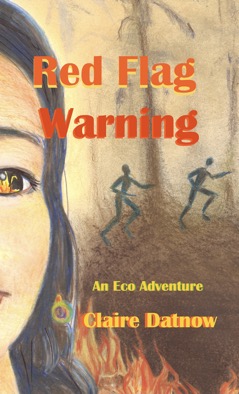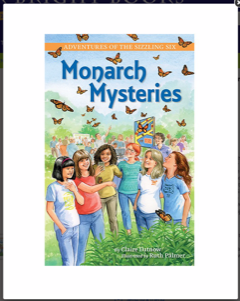YA Eco Mysteries, Memoirs, Novels & Travel
The Winds of Change are Calling
In a world where the gale force winds of change are driving hurricanes, tornadoes, droughts, floods and forests fires, I ask myself: what can I do to make a difference no matter how small? As a writer, I have chosen to dedicate myself to weaving stories that will, hopefully, inspire the children of tomorrow to shape a brighter future.
After decades of misinformation, denial, and inadequate attempts to reduce the dire impact of environmental destruction, young people around the world are troubled, angry, and frustrated. They are searching for ways to understand and to take action.
The epiphany that inspired me to begin writing Eco-mysteries struck me one morning driving to work down the road winding through a wooded hillside. As I approached the bottom of the hill, I yelled out loud, “How dare they!” Overnight, a swath of naked red dirt had replaced a verdant forest. A forest of oak, hickory, poplar, and pine, which had sheltered and sustained a rich diversity of life, had been bulldozed to a barren patch of clay, leaving one ancient white oak, standing like a beacon of hope.
After that aha moment, whenever I drove by the oak it kept calling to me to share its sad tale. I imagined the oak, which I named Alba Maizie, telling its story to the neighborhood’s children. Nine months later, The Adventures of The Sizzling Six: The Lone Tree became the first Eco-mystery, which blossom into a series of nine books published over the past decade.
Woven into this story about six feisty girls determined to save their white oak, is a serious theme. Over half of the tropical forests worldwide have been destroyed since the 1960s, and every second more than one hectare of tropical forests is lost, according to the International Union for Conservation of Nature (IUCN). The loss of forests threatens the survival of many species, including humans, and reduces the ability of forests to sustain clean air and water.
Yet, all is not yet lost. Science-based solutions, such as forest restoration, can reduce the worst effects of deforestation and recover the ecological, social, climatic and economic benefits of our forests. That is why I apply scientific knowledge to create plausible and hopeful but realistic endings for my stories rather than gloomy or magical fairytale ones. A caveat: as environmental writers we have a responsibility to thoroughly research the scientific underpinnings of our stories. Pseudoscientific claims that appeal to ingrained fears and long-standing beliefs can become widely accepted, hampering action to reduce the harmful effects of climate change.
Following The Lone Tree, I created stories for The Sizzling Six series woven around North America’s disappearing species. My focus widened to the international sphere with The Case of the Missing Piping Plovers, which chronicled the exciting discovery of the winter nesting grounds of Piping Plovers on a remote coral reef in the Bahamas. Vanishing Birds, slated for publication in the fall of 2023, I expanded my stories to include the entire length of the Atlantic migratory flyway from Baffin Bay in the Arctic to Tierra Del Fuego, the southernmost point of South America.
Recently I completed the first book of a trilogy, Red Flag Warning, on climate change, broadening the stories to global issues impacting us worldwide. Currently, I am working on The Gray Whale’s Lament, the second book in the trilogy.
Now, more than ever, we citizens need who understand that what happens in distant places on our planet may impact what’s our country. Although we should never sugarcoat the truth, we can all do our part, no matter how small, to make the world a better place for future generations.
x
Searching for Ways to Introduce Climate Change
Melting Ice in The Antarctic_Boris Datnow
- Why Teach Climate Change?
Since climate change will impact daily life—now and in future—it is both a critical problem that needs to be addressed and one that can be adapted to effective teaching, across the curricular. Science-based information, methods, and resources help educators broach this complex subject, no matter what area they teach.
Understanding the impact of climate change is an essential step toward preparing our students to become knowledgeable, active, and just stewards of our state’s and our planet’s natural environment adversely impacted by climate change.
- Ways to Introduce Climate Change: Instead of burdening educators with additional stand-alone, complex areas to study, the good news is that Environmental Literacy can become a part of subjects and activities already in your state’s core curriculum standards in science, math, social studies, and language arts.
- Climate Fiction: As Earth’s changing climate becomes an ever-increasing concern, young readers are turning to climate fiction as a way to engage their imaginations and deal with their fears in the safety of their present environment. The teens in these climate fiction stories demonstrate courage, tenacity, compassion, imagination, and foresight. So, although the events may be upsetting, the reader empathizes with the main characters and finish the last page feeling informed, hopeful, resolute, and inspired.
- Connecting Scientific Concepts with Fiction/Storytelling can be a powerful way to make future consequences more immediate to ourselves and our students. Fiction can be woven into teaching environmental science and climate change as outlined in the core curriculum standards
For Free Teacher Handouts and Lessons Plans visit: mediamint.net:
Teaching Environmental Science/Climate Change/ Through Fiction.
Fiction can be a powerful way for students to understand how climate change has and will impact their future. Fiction is one way (cli-fi) can serve as a springboard for lively discussions. In addition, stories offer ways in which students can envision and adjust to climate change.
- After reading appropriate fiction, Language Arts teachers can Inspire Lively discussions by interweaving the Theme of Climate Change.
- Social Studies Teachers and can Inspire Lively discussion around the impact of Climate change on marginalized groups in their own communities and around the globe (Social Justice).
Links to Additional Resources.
Climate Change Fiction for Kids: https://mediamint.net/page7/files/Climate%20Change%20Fiction%20for%20Kids.html
Red Flag Warning: An Eco Adventure by Claire Datnow

YA/Teen Eco Fiction. https://mediamint.net/page7/files/Teen%20Eco%20Fiction.html
The Winds of Change: Children’s Environmental Climate Fiction: https://dragonfly.eco/the-winds-of-change-childrens-environmental-climate-fiction/
INTERVIEW: CLIMATE CHANGE FOR TEENS
https://mediamint.net/page7/files/Interview:%20Climate%20Change%20for%20Teens.html
Climate Change Fiction: Multicultural, Diverse, Global, and with Animals, Too! a guest blog by author Claire Datnow: https://www.teenlibrariantoolbox.com/2021/03/climate-change-fiction-multicultural-diverse-global-and-with-animals-too-a-guest-blog-by-author-claire-datnow/
Interview with Mary Woodbury Climate Fiction:
https://dragonfly.eco/indie-corner-claire-datnow/
How To Teach Climate Change Without Panicking Your Students: https://blog.planbook.com/teach-climate-change/
Eco Mysteries and Earth Day
Coincidence or Serendipity? Three historic events this April have coincided with a personal event that's meaningful to me and, hopeful, to my reader. This month marks the tenth anniversary of the BP oil spill, the fiftieth anniversary of Earth Day, and the ongoing Covid-19 pandemic. Wow! What are the chances of that happening? Could this be the universe reminding me of my passion for writing eco mysteries is important and should continue? I might also mention the strange coincidence of our stateroom # 1918, on our recent cruise to Antarctica, which coincided with the Spanish flue epidemic—and hinted at the Covid-19 pandemic. By sheer luck, the virus missed us, but infected the passengers on the next cruise—but that is a tale for another blog. Read More...



